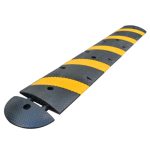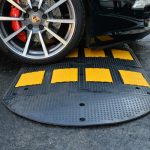The Importance of Parking Lot Stops
Parking lot stops, also known as wheel stops or parking blocks, play a crucial role in ensuring safety and order in parking areas. They help in preventing vehicles from overreaching designated parking spaces, which can lead to accidents or damage to property. By installing parking lot stops, you create a controlled environment that reduces the risk of such incidents significantly.
Benefits of Installing Parking Lot Stops
- Enhanced Safety: Parking stops act as a barrier, preventing cars from pulling too far forward, which could result in collisions with buildings, other vehicles, or pedestrians.
- Organized Parking: They assist in maintaining an organized parking area by clearly defining parking spaces.
- Reduced Liability: Property owners can minimize their liability regarding vehicle damage or pedestrian accidents within their premises.
- Cost-Effective: Compared to other parking control solutions, parking stops are relatively inexpensive and easy to install.
Types of Parking Lot Stops
The market offers a variety of parking lot stops made from different materials, each with unique advantages.
Rubber Parking Stops
Rubber parking stops are durable and can withstand significant impact without cracking. They are also environmentally friendly as they are often made from recycled tires. Their flexibility makes them suitable for diverse parking surfaces.
Concrete Parking Stops
Concrete parking stops are known for their sturdiness and longevity. They are heavier and less likely to move during impacts. However, they might require more maintenance over time due to potential cracks or chipping.
Plastic Parking Stops
Plastic parking stops are both lightweight and resistant to weather conditions. They are easy to install and are available in various colors, making them visible and ideal for various parking settings.
Installation Process
- Site Preparation: Ensure the surface where the parking stops will be installed is clean, level, and free of debris.
- Positioning: Align the parking stops accurately to ensure they mark the correct parking space dimensions.
- Anchoring: Use appropriate anchoring systems depending on the surface material. For concrete, expansion anchors are recommended, while for asphalt, rebar anchors work best.
- Securing: Tighten the anchors to secure the parking stop firmly in place.
Maintenance Tips
Maintaining parking lot stops is crucial for their longevity and effectiveness:
- Regularly inspect for signs of wear or damage and replace if necessary.
- Ensure the stops remain securely anchored, adjusting or tightening anchors periodically.
- Clean the stops to prevent buildup of dirt or debris that may affect their visibility.
Get More Information
Interested in learning more about parking lot stops and their pricing? Visit our website for detailed product information and pricing options.
Click here to get more information about prices of parking lot stops and find the best options to suit your needs.




